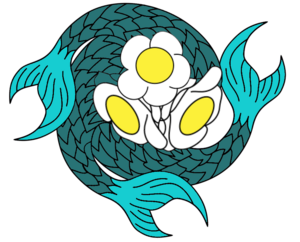Čajraism: Difference between revisions
BecomeMonke (talk | contribs) No edit summary |
BecomeMonke (talk | contribs) m (muslims are no longer canon) |
||
| Line 9: | Line 9: | ||
=== Ocean Divines === | === Ocean Divines === | ||
The Ocean divines are the highest divinities in the Čajra faith and all other divinities are considered subservient to them. Ocean divines are considered by most | The Ocean divines are the highest divinities in the Čajra faith and all other divinities are considered subservient to them. Ocean divines are considered by most Čajrabenika to be equal to one another and equally deserving of merit, despite personal preferences in regards to worship. There are also sects who believe in the superiority of certain Ocean divines above others, however, these are mostly fringe groups who are the targets of heavy condemnation by the mainstream Čajra faith. | ||
The ocean divines are as follows: | The ocean divines are as follows: | ||
Latest revision as of 20:16, 3 January 2025
Čajra (Dariyayi:Chayhra) is a polytheistic religion centered on the Hikmet and the teachings of the sailor and mystic Idris Chayhroud. Adherents of Čajra are known as Čajrabenika (Dariyayi: Chayharvandan). The religion is widely popular in the Ciotterman Empire, northern Swopia, and some areas of Meridia and southern Bokoda.
Čajrabenika believe that Čajra is a universal culmination of a faith revealed to many prophets and messengers of a varied number of religions in the area known today as the Ciotterman Empire. The ultimate purpose of it is the worship of the sea, but the specific nature of said worship varies for each sect. Once a decade, Čajrabenika older than 12 are expected to partake in the “rite of submersion” which involves drinking a tea of a highly psychoactive substance and being repeatedly submerged in flowing water. Whilst the “rite of submersion” is the most important religious practice of Čajraism, there are a number of other rites and actions that upon their performance, supposedly grant their performer a closer connection to the ocean divines.
The name Chayhra originates from the ancient languages from the Ciotterman region, but it is theorized to mean “Follower of the waters” or “Tea follower” (in relation to heavy emphasis of tea as a religious rite).
Articles of faith
Ocean Divines
The Ocean divines are the highest divinities in the Čajra faith and all other divinities are considered subservient to them. Ocean divines are considered by most Čajrabenika to be equal to one another and equally deserving of merit, despite personal preferences in regards to worship. There are also sects who believe in the superiority of certain Ocean divines above others, however, these are mostly fringe groups who are the targets of heavy condemnation by the mainstream Čajra faith.
The ocean divines are as follows:
Kermanish “Wielder of the winds”: Is mainly the god of favorable winds and sea faring. Beloved by sailors, Kermanish is seen as responsible for the safe voyage of any ship. Particularly distinguished sailors can be rumored to be pupils of his, although few have been officially canonized as such. The main group that worships Kermanish is the Church of Kermanish and it is the most popular of the Čajra sects.
Poseitune “Beastmaster”: Is the god of all sea life, particularly animals of the sea. Mostly followed by fishermen, is seen as benevolent to those worthy, granting them with bountiful fish, and merciless to the wicked, unleashing upon them his great sea beasts. His pupils are mostly distinguished members of his main sect, the Followers of Poseitune, being nearly as popular as the Church of Kermanish.
Gavi “The drowned”: Described in the scriptures as “The god of all wicked things”, many things are attributed as Gavi’s domain. Primarily he is attributed as god of misfortune, chaos and death. Despite being associated with aspects of life commonly seen as negative, the Čajrabenika see him as responsible for testing the faithfulness and abilities of Čajrabenika to ultimately grant them their reward in the afterlife. Pupils of Gavi are those who suffered a great deal for a cause, often these are martyrs who die to forward their cause. Whilst there are very few who worship Gavi, most who do are members of the Cult of Gavi, a highly controversial sect that believes Gavi is deserving of being the sole Ocean divine and are, often, willing to martyr themselves for this cause.
Gods
Gods are lesser deities of the Čajra faith responsible for more miscellaneous activities of life. These are considered highly important celestial beings as a collective but individually less important than any single Ocean divine. Whilst these are still objects of worship, exclusive worship of Gods is considered heresy by the Čajra faith.
Pupils
Pupils are beings created for the worship of Ocean divines, and to serve the Ocean divines in duties such as communicating with prophets and otherwise advancing the Čajra faith. Those who, in life, dedicate their existence to the worship of a divine are believed to be Pupils who have yet to rise to serve the divine in their death.
Some prominents canonized Pupils have been: Yusuf al-Bahr, creator and pupil of the Church of Kermanish; Bohdan Morozov, largely responsible for facilitating conversions in Meridia, pupil of the Follower of Poseitune.; Samira-i Safa, pupil of the Followers of Poseitune; Nadine-i Karadeniz, creator and pupil of the Cult of Gavi.
Hikmet
The Hikmet is a collection of the main religious texts of the Čajra faith, it combines a number of religious texts from older Ciotterman religions and newer texts realizing the unification of them all. The Hikmet is the primary source of spiritual wisdom for all Čajrabenika, it is the ultimate recourse of all theological discussion. Individual sects may also recognize other texts as scripture. The largest section of the Hikmet was written by Idris Chayhroud and describes most of the aspects of the religion relayed in this article.
Acts of worship
There are 3 main acts of worship in the Čajra. Whilst there are varied ways in which one can demonstrate their devotion to the Ocean divines in the faith, these 3 are expected of any Čajrabenik
Rite of submersion
Every decade it is expected of every Čajrabenik older than 12 years to engage in the rite of submersion. The rite is a guided process in which a member of your Čajra sect will make for the members of their sect a tea with the leaves of fluorescent algae, a highly psychoactive substance. After consuming the tea, the Čajrabenika will be taken to the nearest source of flowing water and drowned repeatedly until they reach sobriety. This process may last from 4 to 6 hours, whilst under other circumstances sobriety from a fluorescent algae tea would take anywhere from 24 to 48 hours. Čajrabenika believe this process to demonstrate your faith in the water to cleanse you of any physical, mental or spiritual ailments. The next rite of submersion will happen in the year of 1930.
Consumption of tea
In the Čajra faith, tea is seen as a holy beverage. The act of consuming tea is expected as tea is seen as the reflection of unity between Land, represented by the plant, and the sea, represented by the water. The union of land and sea through submersion is core to the Čajra faith.
Prayer
The specific nature of prayer can vary depending on the sect followed but the act of praying is expected of any Čajrabenik. The Church of Kermanish has looser expectations, considering personal meditation near or in the ocean to suffice. The Followers of Poseitune believe in a more involved prayer process, often requiring congregation in a church and sharing your prayers with a priest or other Follower. Members of the Cult of Gavi consider it necessary to be fully submerged in water to be necessary for a prayer to be effective.


